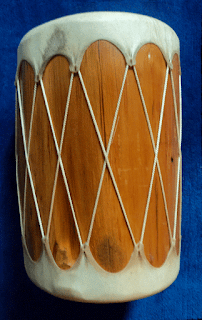When I give an oracle reading using the Journey Oracle deck I created, I price the reading with a wonderful art deck called The Key to the Kingdom, An Enchanted Deck of Transformation Playing Cards,created by Tony Meeuwissen.
I ask my client to shuffle, draw 4 cards, and then lay these face down in a horizontal line with a space between the second and third card. No peeking! I then explain the rules for this special oracle card game. All face cards and 10's count as 0, Ace's count as 1, all other cards are their face value.
The client gets to decide who is going to "read" these cards to determine the price by choosing one of three possible versions.
1. The Lords and Ladies of the spirit realms get to determine the price.
This means the cards are turned over in their order and the price is whatever is shown without rearranging the cards. It could be $99.99 or it could be $00.00! They are not called Chance and Chaos for nothing.
2. The client determines the price.
This means that the client turns over the cards and can rearrange them in any order; but is limited to using only these four cards.
3. The client asks me to determine the price.
This means that I turn the cards over and can rearrange them in any way I choose.
Issues about what time and effort is worth, and taking a risk, and trusting, come up for both of us.
This client chose #2. She would determine the price. And this is what she was given to work with. Fascinatingly, some quite dramatic choices: 30.00 dollars / 03.00 dollars / 00.03 cents. I was grateful she chose the $30. but my part of the gamble is I must be OK with .03 cents.
I do this oracle card pricing only after the reading is finished. This is because I feel a value cannot be established for magical service until after the magic has happened.
We then read the nursery rhymes that matched the cards as some oracle card advice about her situation. We started at the least valued position.


In her situation, this was good advice about not waiting to begin the resolution: jump to it!


This poem describes both a solid sense of self-worth and some pretty inventive creativity. Excellent advice for taking action.


This rhyme in Old English is about making something delicious using generosity. A indication of the good results of taking action.


What good advice about not being timid from the oracle card with the most value. The outcome of resolving the situation is becoming a "tiger-soul on elfin wings." What a fierce and yet delicate image to conclude an oracle card reading.



























